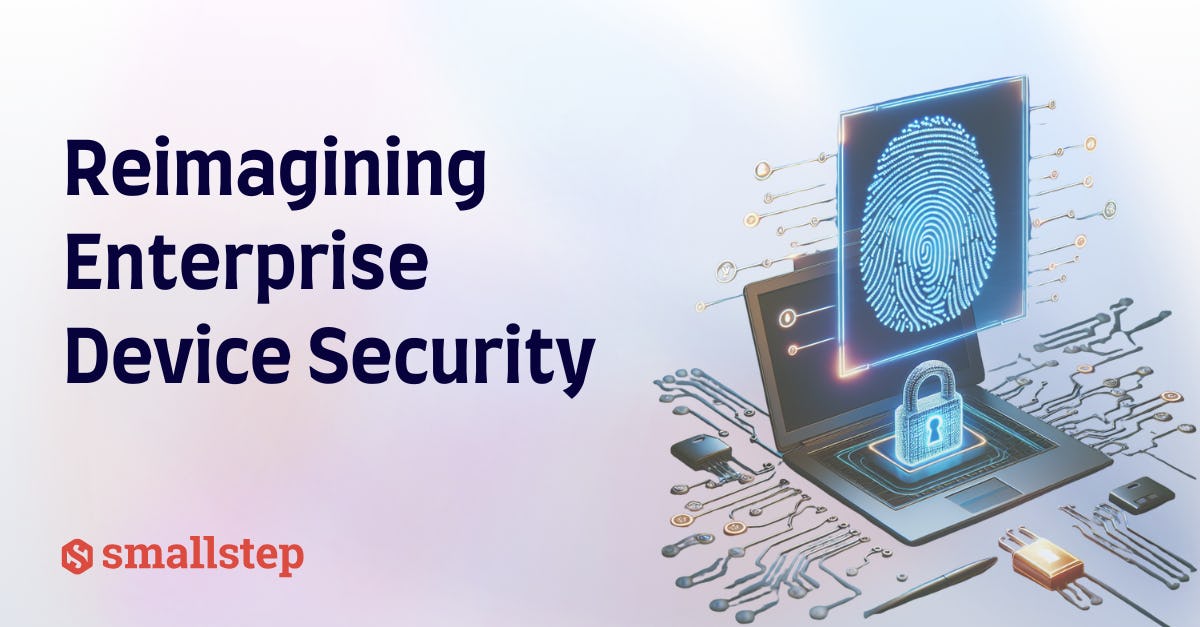Build a Tiny Certificate Authority For Your Homelab

Carl Tashian
 TL;DR In this tutorial, we're going to build a tiny, standalone, online Certificate Authority (CA) that will mint TLS certificates and is secured with a YubiKey. It will be an internal ACME server on our local network (ACME is the same protocol used by Let's Encrypt). The YubiKey will securely store the CA private keys and sign certificates, acting as a cheap alternative to a Hardware Security Module (HSM). We'll also use an open-source True Random Number Generator, called Infinite Noise TRNG, to spice up the Linux entropy pool.
TL;DR In this tutorial, we're going to build a tiny, standalone, online Certificate Authority (CA) that will mint TLS certificates and is secured with a YubiKey. It will be an internal ACME server on our local network (ACME is the same protocol used by Let's Encrypt). The YubiKey will securely store the CA private keys and sign certificates, acting as a cheap alternative to a Hardware Security Module (HSM). We'll also use an open-source True Random Number Generator, called Infinite Noise TRNG, to spice up the Linux entropy pool.
Why would I want a Certificate Authority in my homelab?!
- Because end-to-end TLS is great and you should easily be able to run TLS wherever you need it. Especially in your homelab. Internal networks are no longer perceived as a safe zone where unencrypted traffic is okay. But you need certificates.
- Because TLS client authentication is becoming more widely supported in different services, and it's a lot better than passwords. But you need certificates.
- Because the ACME protocol (used by Let's Encrypt) can easily be deployed internally, so you can automate renewal and never have to think about your certificates.
- Because maybe you've done the 'self-signed certificate' rigmarole with OpenSSL a dozen times already. Might as well formalize things and get your devices to trust a CA that you can use wherever you need it.
- Because setting up a simple CA is a great learning experience.
- Still not convinced? Spin up a free hosted homelab CA using our Certificate Manager offering instead.
Tiny CA Specs
- Raspberry Pi 4 Model B 2GB + microSD card
- Any YubiKey that supports the Personal Identity Verification (PIV) application, for CA signing operations. I'm using a YubiKey 5 NFC.
- Optional: Infinite Noise TRNG for outboard random number generation.
- A USB thumb drive—or a second YubiKey—for storing an offline backup of our CA
- We'll be running the
step-caopen-source online Certificate Authority. - Total cost: Around US$100
Part 1: System Setup
Basic OS & Networking Setup
- On your laptop, burn the Ubuntu 25.04 Server 64-bit ARM pre-installed server image onto the microSD card using the Raspberry Pi Imager.
- Fire up the Raspberry Pi, plug it into your network, and find its initial IP address.
You can run
arp -na | grep -e "b8:27:eb" -e "dc:a6:32" -e "e4:5f:01"to discover Raspberry Pi devices on the local network. - Login via SSH (username and password will be
ubuntu), and change the password. - Set the hostname via
hostnamectl set-hostname tinyca - Set the timezone using
timedatectl set-timezone America/Los_Angeles(or whatever your timezone is;timedatectl list-timezoneswill list them all) - Be sure NTP is working. Check status with
timedatectl— make sure "NTP Service" is "active". If not, you can add some NTP servers to/etc/systemd/timesyncd.confand runsystemctl restart systemd-timesyncd. - You'll need the machine to have a DNS name (for me it's
tinyca.internal) and/or a static IP on your network.
Now that you have good time synchronization and a stable hostname, we can proceed.
Install prerequisite: ykman
Now, insert your YubiKey. Let's install the yubikey-manager (and dependency pcscd) and make sure you can connect to the YubiKey:
Install prerequisite: Go
You'll need Go in order to build the step-ca server.
Build and install step-ca and step
You'll need to install both step-ca (the CA server software) and step (the command used to configure and control step-ca).
First, download the source for step-ca and build it with experimental YubiKey support enabled:
Now build step-ca. This will take some time on a Raspberry Pi, so be patient:
Now install step from a prebuilt binary:
Optional, but 🔥: Set up the outboard random number generator
Infinite Noise TRNG is an open-source USB True Random Number Generator. It uses a "modular entropy multiplier" architecture to generate a lot of random data quickly. For this setup, a daemon will continuously feed entropy into Linux's system entropy pool by writing to/dev/random.
But will this lovely new entropy generator actually be used by the CA? I needed to answer two questions here:
- How does the CA generate random numbers? I had to dig around a little to confirm this.
step-causes Go'scrypto/randfor all of its key generation, andcyrpto/randuses/dev/urandomas its random data source on Linux systems.- Does the entropy created via writing to
/dev/randomactually affects what is read from/dev/urandom? It does—because Linux has only one entropy pool, shared by/dev/randomand/dev/urandom.We also need to confirm that the outboard TRNG is actually generating high quality noise. We'll do that in a minute. You'll need to compile the driver from source, because there's no pre-built
arm64package available.
Now, plug in the TRNG and restart your system.
After a restart, you should see that the driver has started up. It will start and stop based on whether the TRNG is present.
$ systemctl status infnoise ● infnoise.service - Wayward Geek InfNoise TRNG driver Loaded: loaded (/usr/local/lib/systemd/system/infnoise.service; disabled; preset: enabled) Active: active (running) since Thu 2023-02-16 14:43:02 PST; 1min 44s ago Process: 655 ExecStart=/usr/local/sbin/infnoise --dev-random --daemon --pidfile /var/run/infnoise.pid (code=e> Main PID: 661 (infnoise) Tasks: 1 (limit: 2082) Memory: 700.0K CPU: 162ms CGroup: /system.slice/infnoise.service └─661 /usr/local/sbin/infnoise --dev-random --daemon --pidfile /var/run/infnoise.pid Feb 16 14:43:02 tinyca systemd[1]: Starting Wayward Geek InfNoise TRNG driver... Feb 16 14:43:02 tinyca systemd[1]: Started Wayward Geek InfNoise TRNG driver.
Finally, let's run a health check to make sure the TRNG is ready for use:
Entropy is written to /dev/random by infnoise.service every second. You're all set on randomness! Now that you have more than enough entropy, you're ready to generate your CA keys.
Part 2: Creating Your PKI
Now you'll create your root and intermediate CA certificates and keys, and store them securely on the YubiKey.
Ideally, your Raspberry Pi should be kept offline for this section. Disconnect the Ethernet cable, and connect directly to the device via HDMI and a keyboard.
Prepare a USB thumb drive for storing the private keys
You can't just have your CA private keys live only on the YubiKey. You'll want at least one backup of them, in case the YubiKey breaks!
Insert a USB thumb drive. You'll generate the keys directly on this drive, so that they never touch the Pi's microSD card. First, find the device name of your USB drive:
In this case, the drive is /dev/sda. Let's initialize it with a single ext4 partition:
$ sudo fdisk /dev/sda Welcome to fdisk (util-linux 2.36). Changes will remain in memory only, until you decide to write them. Be careful before using the write command. Command (m for help): n Partition type p primary (0 primary, 0 extended, 4 free) e extended (container for logical partitions) Select (default p): p Partition number (1-4, default 1): First sector (2048-31260671, default 2048): Last sector, +/-sectors or +/-size{K,M,G,T,P} (2048-31260671, default 31260671): Created a new partition 1 of type 'Linux' and of size 14.9 GiB. Command (m for help): w The partition table has been altered. Calling ioctl() to re-read partition table. Syncing disks. $ sudo mkfs.ext4 /dev/sda1 -v mke2fs 1.45.6 (20-Mar-2020) fs_types for mke2fs.conf resolution: 'ext4' Filesystem label= OS type: Linux ... Creating journal (16384 blocks): done Writing superblocks and filesystem accounting information: done
Generate your PKI on the thumb drive
Great, now you're ready to create your Public Key Infrastructure (PKI). Specifically, you'll be creating CA keys and certificates.
Tiny CA PKI Highlights:
- Tiny CA has a root CA key and certificate, and an intermediate CA key and certificate.
- The root CA key signs the Intermediate CA certificate.
- The root CA certificate is self-signed (signed with the root CA key)
- The intermediate CA key will sign all of your TLS certificates.
- By default,
step-caissues certificates with a 24-hour lifetime. I hope this default will compel you to set up automated renewal on your clients. And you can always increase the TLS certificate duration in the CA configuration, if you want something a bit more relaxed.- If a device is configured to trust your root CA, it will trust certificates you create with
step-ca.- You can throw away the root CA key if you never need another intermediate.
- Need a refresher on X.509 certificates? See our post, Everything you should know about certificates and PKI but are too afraid to ask. Use a strong password when prompted, and save your password separately, offline, somewhere super duper safe.
$ sudo mount /dev/sda1 /mnt $ cd /mnt $ sudo mkdir ca $ sudo chown ubuntu:ubuntu ca $ export STEPPATH=/mnt/ca $ step ca init --pki --name="Tiny" --deployment-type standalone ✔ What do you want your password to be? [leave empty and we'll generate one]: ... Generating root certificate... all done! Generating intermediate certificate... all done! ✔ Root certificate: /mnt/ca/certs/root_ca.crt ✔ Root private key: /mnt/ca/secrets/root_ca_key ✔ Root fingerprint: d6b3b9ef79a42aeeabcd5580b2b516458ddb25d1af4ea7ff0845e624ec1bb609 ✔ Intermediate certificate: /mnt/ca/certs/intermediate_ca.crt ✔ Intermediate private key: /mnt/ca/secrets/intermediate_ca_key FEEDBACK 😍 🍻 The step utility is not instrumented for usage statistics. It does not phone home. But your feedback is extremely valuable. Any information you can provide regarding how you’re using `step` helps. Please send us a sentence or two, good or bad: feedback@smallstep.com or join https://github.com/smallstep/certificates/discussions.
Don't forget to give your CA a cute name! It will appear on all of your certificates. Hold onto your root fingerprint, too; you'll need it to bootstrap your clients later.
Import the CA into the YubiKey
Now, let's import our PKI to the YubiKey.
OK! Now you'll copy out the CA certificate files, leave the private keys on the USB stick, and continue creating your CA.
Finally, reconnect your CA to your local network to continue the setup.
Part 3: Configuring Your CA
You're going to re-run step ca init now, but you're not going to use the certificates or keys that it generates.
You're just doing this to create the configuration files.
The password you choose when prompted will be your admin provisioner password.
Anyone with this password will be able to administer your CA and get any certificate from it,
using the step ca certificate subcommand.
Don't use your root CA password for your provisioner, but pick something strong and store it somewhere safe.
$ sudo useradd step $ sudo passwd -l step $ sudo mkdir /etc/step-ca $ export STEPPATH=/etc/step-ca $ sudo --preserve-env step ca init --name="Tiny CA" \ --dns="tinyca.internal,10.20.30.42" --address=":443" \ --provisioner="you@example.com" \ --deployment-type standalone \ --remote-management Choose a password for your CA keys and first provisioner. ✔ [leave empty and we'll generate one]: Generating root certificate... done! Generating intermediate certificate... done! ✔ Root certificate: /etc/step-ca/certs/root_ca.crt ✔ Root private key: /etc/step-ca/secrets/root_ca_key ✔ Root fingerprint: 60440dc6ef5b923810b22f85a907f307badb58314c5fdc2231a3c1a892d6c275 ✔ Intermediate certificate: /etc/step-ca/certs/intermediate_ca.crt ✔ Intermediate private key: /etc/step-ca/secrets/intermediate_ca_key ✔ Database folder: /etc/step-ca/db ✔ Default configuration: /etc/step-ca/config/defaults.json ✔ Certificate Authority configuration: /etc/step-ca/config/ca.json ✔ Admin provisioner: you@example.com (JWK) ✔ Super admin subject: step Your PKI is ready to go. To generate certificates for individual services see 'step help ca'.
Next, let's get your certificates in place.
Next, you'll need to configure step-ca to use your YubiKey to sign certificates, using the intermediate key on the YubiKey. Notice that the default YubiKey PIN (123456) is shown here, too.
You should change your YubiKey PIN, PUK, and management key if you haven't already! Learn how in this guide. Now edit the file
/etc/step-ca/config/ca.json. You'll want the top of the file to look like this:
Now you'll start up the CA and make sure it's running properly:
In another window, you'll generate a test certificate for localhost. This is where you'll need the CA fingerprint, which is displayed when you start up the CA. Run:
$ step ca bootstrap --ca-url "https://tinyca.internal" --fingerprint d6b3b9ef79a42aeeabcd5580b2b516458ddb25d1af4ea7ff0845e624ec1bb609 The root certificate has been saved in /home/ubuntu/.step/certs/root_ca.crt. Your configuration has been saved in /home/ubuntu/.step/config/defaults.json. $ step ca certificate "localhost" localhost.crt localhost.key ✔ Provisioner: you@example.com (JWK) [kid: izgi9tn1YWbVnY_rmIUKzE-Dn-XIuKz-_J1dnnKeDRA] ✔ Please enter the password to decrypt the provisioner key: ✔ CA: https://tinyca.internal:443 ✔ Certificate: localhost.crt ✔ Private Key: localhost.key $ step certificate inspect localhost.crt --short X.509v3 TLS Certificate (ECDSA P-256) [Serial: 2903...3061] Subject: localhost Issuer: Tiny Intermediate CA Provisioner: you@example.com [ID: izgi...eDRA] Valid from: 2023-02-16T23:03:52Z to: 2023-02-17T23:04:52Z
Great! You just signed your first X.509 TLS leaf certificate using the YubiKey and step-ca.
When you ask the CA to issue a leaf certificate for a TLS endpoint, you'll get a certificate file and a (locally-generated) private key file. The certificate file will contain both the intermediate CA certificate and the leaf certificate you requested. This way, a device which trusts your root CA can verify the chain of trust from the root to the intermediate, and from the intermediate to the leaf.
Finally, you'll add an ACME provisioner, which will turn your Tiny CA into a tiny Let's Encrypt!
Sign in with your admin password, and your new new ACME provisioner will be created.
You can now shut down the step-ca process you started in the other terminal window.
Configure systemd to start the CA
In this section you'll set up a systemd service for step-ca so it starts when the system starts up.
You'll also configure systemd to stop the CA when the YubiKey is removed, and restart it when the YubiKey is reinserted.
First, you need to tell udev about your YubiKey by adding some udev rules, which will help make the YubiKey visible to systemd as a device.
$ sudo tee /etc/udev/rules.d/75-yubikey.rules > /dev/null << EOF ACTION=="add", SUBSYSTEM=="usb", ENV{PRODUCT}=="1050/407/*", TAG+="systemd", SYMLINK+="yubikey" ACTION=="remove", SUBSYSTEM=="usb", ENV{PRODUCT}=="1050/407/*", TAG+="systemd" EOF $ sudo udevadm control --reload-rules
Here, the format of the ENV{PRODUCT} value is {vendorId}/{productId}/*. Yubico's vendor ID is 1050, and 407 is the product ID for the YubiKey 5 NFC. If you're using a different YubiKey, you can find your model number here.
Now you'll set up the CA as a systemd service that will:
- run on system startup, when the YubiKey is inserted
- stop when the YubiKey is removed
- start again when the YubiKey is reinserted
Now insert the YubiKey and the service should start:
$ sudo systemctl status step-ca ● step-ca.service - step-ca Loaded: loaded (/etc/systemd/system/step-ca.service; enabled; vendor preset: enabled) Active: active (running) since Tue 2020-12-08 14:27:02 PST; 3s ago Main PID: 3269 (sh) Tasks: 9 (limit: 2099) CGroup: /system.slice/step-ca.service ├─3269 /bin/sh -c /usr/local/bin/step-ca /etc/step-ca/config/ca.json └─3270 /usr/local/bin/step-ca /etc/step-ca/config/ca.json Dec 08 14:27:02 tinyca systemd[1]: Started step-ca. Dec 08 14:27:02 tinyca sh[3270]: 2020/12/08 14:27:02 Serving HTTPS on :443 ...
Now restart your system and ensure that the CA starts up automatically.
Test out removing the YubiKey, and you should see that the CA stops.
Reinsert it, and the CA should start up again.
Finally, turn on the firewall and disable SSH access
Your tiny CA will be most secure without any SSH access at all. The only open port will be 443, for the CA. For maintenance, you'll need to plug in a keyboard and a display.
Using Your CA
You did it! Your CA is up and running.
Bootstrapping a new device into your PKI
When you run step ca bootstrap (as above) on a new device,
the root certificate root_ca.crt is downloaded from the CA.
If you run step ca bootstrap --install --ca-url=https://your.ca --fingerprint=your-ca-fingerprint,
it will install the root certificate into your device's trust store.
You can also use the step command for easy installation of your root CA certificate (step certificate install),
for ACME enrollment (step ca certificate example.com example.crt example.key --provisioner acme)
and for renewal of any certificate that hasn't yet expired (step ca renew example.crt example.key).
For mobile devices, you can usually install a certificate by sending it to yourself via Bluetooth or AirDrop, or as an email attachment. Make sure the certificate isn't just installed, but actually trusted by the device. This usually involves a couple of confirmation steps on the device.
Use ACME!
With the ACME provisioner, you can use software like Certbot or LEGO CLI to easily get and renew certificates for any endpoint. Our tutorials on running a private ACME server and configuring popular ACME clients to use a private ACME server will show you how to get ACME certificates from your CA using the most common ACME clients and ACME-supporting services.
Automating certificate renewal
Because certificates from your CA have a 24-hour lifetime, you'll want to renew them every 16ish hours. Our renewal documentation has a few options for setting up renewal on your clients.
Further Reading
Now that you have an internal CA, here's a few useful resources:
- To get more familiar with the
stepcommand and how it interfaces with your CA, try out some of the examples in Basic Certificate Authority Operations. - Hello mTLS shows you how to get mutual TLS authentication configured for several common services and programming languages, using the
stepcommand. - There's also a lot to learn about the different provisioners you can add to your CA to suit your workflows.
See Configuring
step-ca. - Bonus: Want to use SSH certificates? You can turn your tiny CA into an SSH CA, and use certificates and single sign-on for your SSH hosts. We have a blog post and video walk-through that describes how to set it up.
Subscribe to updates
Unsubscribe anytime, see Privacy Policy
Carl Tashian (Website, LinkedIn) is an engineer, writer, exec coach, and startup all-rounder. He's currently an Offroad Engineer at Smallstep. He co-founded and built the engineering team at Trove, and he wrote the code that opens your Zipcar. He lives in San Francisco with his wife Siobhan and he loves to play the modular synthesizer 🎛️🎚️



